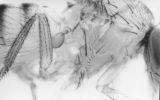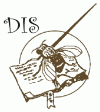      
|


      
|


Medeiros, H.F., and L.B. Klaczko. 1999. A weakly biased Drosophila trap.
Dros. Inf. Serv. 82: 100-102. View PDF
Traps always present some bias. However, we noticed that most traps used in Brazil to collect Drosophila are strongly biased against flies of the tripunctata species group (one of the two most abundant in South American Forests). To try to minimize this problem, we tested 32 different models of traps obtained by successive changes of 7 basic types, starting out with the trap described by Tidon and Sene (1988). Twenty eight experiments in the laboratory and in the field were carried out. We chose the trap that performed best on the following criteria: total number of flies caught for the same volume of bait; smallest bias in relation to the species frequency in the environment (known in laboratory experiments); retention of collected animals; protection of flies from dying by gaseous accumulation or by sticking to the bait; and being less cumbersome.
In the last experiment, we compared, in the field, the trap against the traditional method of collecting Drosophila - collection over banana baits. Nine pairs of trap and bait were set up at least 20 meters from each other. In each set the distance between the bait and the trap was about 4 to 8 meters. No significant differences were detected for the sex ratio per class (Figure 1a). For the species composition, we found similar results for the two methods (Figure 1b), although there were still differences in the class frequencies. Yet, the similarity is better than we expected, and differences are almost negligible when compared to the differences among pairs (not shown).
 |
Figure 1. (a). Relative frequency of females per class for nine sets with trap and bait; (b). Total number of flies by class. willistoni = willistoni group-D. nebulosa; Trip I = tripunctata group; Trip2 = tripunctata group-D. bandeirantorum; melanogaster, guarani and repleta are species group. |
 |
| Figure 2. Making and using the trap. Explanations in the text. |
The trap is made with three transparent 2 litre soft-drink bottles and a piece of panty hose (Figure 2c). In part 3, four windows measuring 0.5 cm ´ 2 cm are opened. Parts 1, 2 and 3 are assembled and fixed. Two pieces of soft paper (Figure 2b) are introduced with a wire to fill the spaces where the flies could die (Figure 2f). Dark parts of the figures are painted with black ink. The cap can receive a piece of filter paper to remove humidity (Figure 2a). To set up the trap in the field, bait is put inside part 4 (directly or inside a vial as showed in Figure 2d). The piece of panty hose is set up and pressed in such a way that it gets attached to the bait (this contact is very important for the efficiency of the trap) (Figure 2e). Then part 4 is adjusted to part 3 and both are attached. The trap can then be hung on the vegetation (Figure 2f). To collect the trapped flies, the panty hose is pulled up closing the entrances (Figure 2g). Part 4 is separated and the bait removed. To transfer the flies, the cap is removed, and the trap, turned upside down, is knocked vigorously in a vial (Figure 2h).
Closing the entrances with the panty hose can be useful allowing the transport of the trap in the field preventing flies from outside the study area to get into the trap. By now, we have collected more than a thousand samples with this model of trap. It has proven to be resistant to rain and practical to use in the field.
Acknowledgement: It is a pleasure to thank Wilma N. de Souza, Horacio Montenegro, and SóniaC. S. Andrade for technical assistance. Research supported by CNPQ, FAPESP and CAPES.
References: Tidon, R., and F.M. Sene 1988, Dros. Inf. Serv. 67: 90.